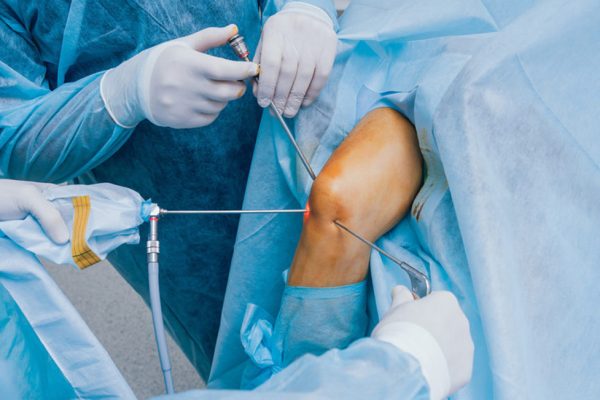Overview
Arthroscopy is a minimally invasive surgical procedure used to examine, diagnose, and treat problems inside a joint. It involves making small incisions (typically about the size of a keyhole) through which a fiber-optic camera (called an arthroscope) and other surgical instruments are inserted into the joint. The camera allows the surgeon to view the inside of the joint on a screen in real time, providing a clear view of damaged tissues, bones, ligaments, tendons, and cartilage.
Arthroscopy is commonly performed on joints such as the knee, shoulder, elbow, ankle, and wrist.
Benefits of Arthroscopy:
- Minimally invasive: Small incisions mean less tissue damage, resulting in shorter recovery times and smaller scars.
- Diagnostic tool: It helps doctors identify the exact cause of joint pain or dysfunction.
- Treatment option: In addition to diagnosing joint issues, arthroscopy can be used to repair or remove damaged tissue, such as:
- Meniscus tears (in the knee)
- Rotator cuff tears (in the shoulder)
- Ligament damage
- Cartilage injuries
- Synovitis (inflammation of the joint lining)
Common Procedures Performed via Arthroscopy:
- Knee arthroscopy: Used to repair torn meniscus, remove damaged cartilage, or treat ligament injuries like an ACL tear.
- Shoulder arthroscopy: Commonly performed to treat rotator cuff tears, shoulder impingement, or labrum injuries.
- Ankle arthroscopy: Often used to treat arthritis, repair torn ligaments, or remove loose bodies within the joint.
- Elbow arthroscopy: Can address elbow pain, remove scar tissue, or treat arthritis.
Recovery After Arthroscopy:
- Most patients can go home the same day, and recovery typically takes less time than traditional open surgery.
- The exact recovery time varies based on the procedure and joint, but many people can return to normal activities within a few weeks to a few months.
Risks of Arthroscopy:
Although arthroscopy is generally safe, it carries some risks, including:
- Infection
- Blood clots
- Nerve or blood vessel injury
- Joint stiffness
- Persistent pain
Overall, arthroscopy is a valuable tool for both diagnosing and treating joint problems with fewer complications and faster recovery compared to traditional open surgery.


